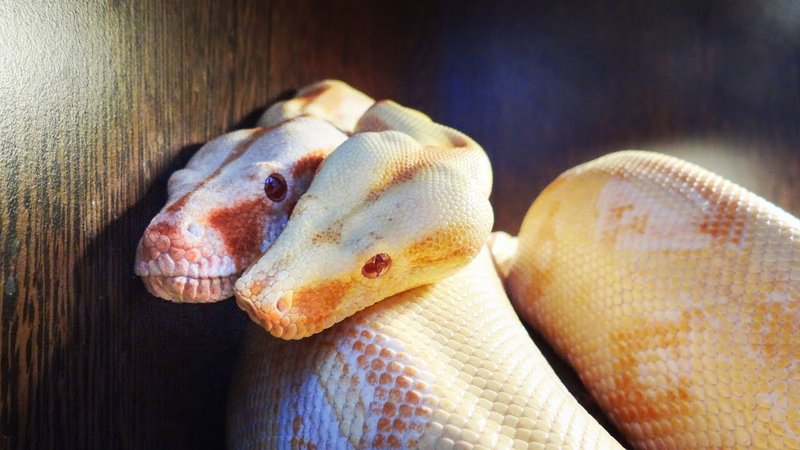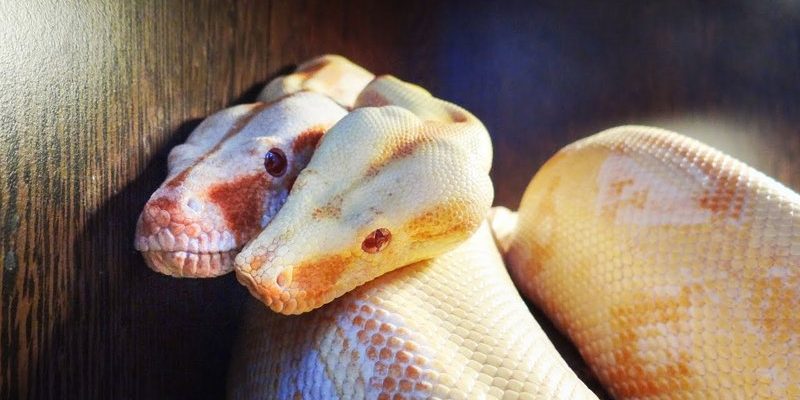
Imagine you’re at a party, and everyone’s trying to find that perfect dance partner. The boa constrictor’s breeding rituals are kind of like that, with courtship dances, signals, and a lot of patience involved. This process isn’t just about reproduction; it’s about connection, survival, and finding the right mate in a vast landscape. If you’ve ever wondered how these amazing creatures continue their lineage, let me take you through the captivating journey of their breeding behavior and what it really means for these shy yet stunning reptiles.
Understanding Boa Constrictor Reproduction
Before diving into the specific behaviors, let’s cover some basics. The boa constrictor is a viviparous species, meaning they give birth to live young rather than laying eggs. This trait is somewhat unique among snakes. In most cases, a female will retain fertilized eggs inside her body until they hatch, giving birth to a litter of baby boas that are ready to start their lives right away. This mode of reproduction offers several advantages, such as increased protection for the young during the vulnerable egg stage.
Typically, female boa constrictors reach sexual maturity around 3 to 4 years of age, while males mature a bit earlier, around 2 to 3 years. The timing of breeding often coincides with environmental factors like temperature and rainfall, which can affect food availability. As such, these boas have a remarkable ability to synchronize their breeding cycles with their ecological conditions, ensuring that there’s enough food for both mothers and their newborns.
The Breeding Season
Breeding season for boa constrictors usually occurs during the warmer months, from late winter to early summer. This is when the snakes emerge from their cozy retreats to find mates. The males are quite the romantics. They’ll engage in a fascinating behavior called combat dancing, where two males intertwine and try to overpower each other in a bid to win the attention of a female. You might be imagining something fierce, but it’s more of a graceful play of strength, almost like a dance-off!
Once a male successfully claims his spot and attracts a female, the two will engage in courtship rituals. This often involves the male gently rubbing his chin against the female and emitting pheromones that signal his readiness to mate. It’s like sending out a friendly invitation, saying, “Hey, I’m here, and I’m ready!” The female’s response can be subtle but is critical; she might sway her body or coil closer to signify her interest.
The Mating Process
After the courtship, the actual mating process begins. This can last anywhere from a few minutes to several hours. During this time, the male wraps his tail around the female, often gripping her tightly to ensure a successful transfer of sperm. The male uses his hemipenes, which are dual reproductive organs, to achieve this. It’s kind of like using two tools to ensure you get the job done!
Here’s the interesting part: boa constrictors can store sperm for several months after mating. This allows females to time the birth of their young to optimal conditions, ensuring greater chances of survival in their natural habitat. So, when you think about it, these snakes are not just mindlessly reproducing; they are planning for the future, much like how we might think ahead when starting a family.
Gestation and Birth
Once the female is fertilized, she enters a gestation period that can last about 5 to 7 months. During this time, her body goes through significant changes as it nurtures the developing embryos. This is where the female shows her strength; she might even go through periods where she refuses food, focusing all her energy on supporting her unborn young.
When the time finally arrives, the female will give birth to a litter that can range from 10 to 60 baby boas, depending on her size and health. Each baby is typically about 2 feet long and ready to fend for themselves right away. It’s a massive job to take on, but once they’re born, the mother offers no further care. It’s a tough world out there, and those little snakes are born ready to embrace it!
Parental Investment: The Role of Mothers
Unlike some animal species, maternal care in boa constrictors is minimal once the little ones are born. The mother offers no nurturing or protection after birth, which might seem harsh. But in the wild, this strategy makes sense. The survival of the fittest rule applies, and the newborns must find their own food and shelter from predators. This means that the female must be well-prepared before giving birth, ensuring she has the strength and resources to produce healthy young.
Interestingly, there are instances where some female boas exhibit a behavior known as brood guarding. While not common, this is more likely to happen in regions with abundant resources. A mother might stay close to her hatchlings for a little while, helping them learn what to eat and how to navigate their surroundings. It’s a perfect example of how the environment shapes behavior, even in creatures where you’d least expect it.
The Role of Males Post-Mating
You might be wondering about the males after mating. Once they’ve played their part in reproduction, male boa constrictors generally move on and seek other mating opportunities, often roaming in search of additional females. This is a typical strategy in the animal kingdom, where males maximize their chances of passing on their genes.
It’s fascinating to think of these males as wandering nomads, always on the lookout for the next potential mate. They rely on their keen sense of smell to track down female pheromones, acting almost like a treasure map leading them to their next adventure.
Breeding and reproductive behavior in boa constrictors is a complex interplay of instinct, environmental factors, and sheer survival. From their unique mating rituals to the remarkable ability to give birth to live young, these creatures embody a fascinating aspect of nature’s diversity. You might watch a boa constrictor slithering along and only see a sleek, silent predator, but remember there’s a whole life cycle happening beneath the surface.
Understanding these behaviors not only enriches our appreciation for these snakes but also highlights the nuanced ways species adapt to their habitats. The next time you come across a boa constrictor, take a moment to think about the journey that brought it into the world, and the cycle that will continue on for generations to come. It’s a testament to the beauty and complexity of life, don’t you think?

